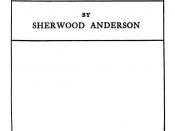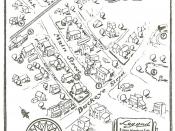Following the industrial revolution and steady rise in large city population, life in small town America came to be increasingly idealistic. Sherwood Anderson highlighted his views of small town America in his novel, Winesburg, Ohio, which he wrote during the years of 1915 to 1917. This novel is quite unique in that it is a collection of 23 separate short stories related by the common focus of small town life. In Winesburg, Ohio, Sherwood Anderson explores the importance of human understanding as it relates to the coming of age of the novel's main character, George Willard.
Sherwood Anderson is known today as an innovator of twentieth century literature. Although disputed, it is believed by some that Anderson never received proper attention for the genius of his works (Weber). William Faulkner commented that "[Anderson] was the father of my generation of American writers and the tradition of American writing which our successors will carry on.
He has
never received his proper evaluation" (Weber). His writing, though, undoubtedly has had a profound effect on American literature.
The legacy of Anderson's Winesburg, Ohio is perhaps the astounding influence it had on readers, writers, and even twentieth century America. Geismar notes that:
For the conservatives of 1919, Winesburg may have appeared to be tunneling under all the established values of American life. And for some of the radicals of the day, Winesburg was exposing the sewers, and opening for public inspection the inadequate drainage system of the luxurious American psyche. (50)
In truth, his novel brought about much controversy in regard to American literature. Geismar applauds Anderson in being "one of the first social rebels of the early twenties to attack the illusions of civilization in the United States..." (Geismar 50). With this method of inciting readers and "fumbling for exactitude", Anderson's...


